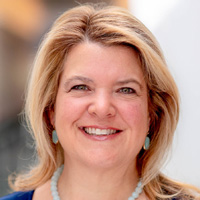Discussing Family Legacy Plans? 5 Tips to Navigate ‘the Talk’
A successful plan to pass wealth on to future generations takes effective communication delivered with a dose of sensitivity.


Passing wealth through generations can be fraught with complexity. Money is often an emotionally charged topic, and an older generation’s plans and intent for transferring wealth can trigger an array of reactions from younger family members.
Recent projections show that by 2045, $72.6 trillion will be passed on to heirs, and another $11.9 trillion will be donated to charities. The sheer magnitude of this generational wealth transfer amplifies the need for families to develop, and talk through, detailed legacy plans.
I often work with clients to coordinate a comprehensive multi-generational meeting where family members can come together in a safe, neutral space for the older generation to communicate their financial and non-financial plans to younger generations. For families – regardless of wealth level – looking to utilize a similar concept, below are five tips to make this meeting successful.
From just $107.88 $24.99 for Kiplinger Personal Finance
Become a smarter, better informed investor. Subscribe from just $107.88 $24.99, plus get up to 4 Special Issues

Sign up for Kiplinger’s Free Newsletters
Profit and prosper with the best of expert advice on investing, taxes, retirement, personal finance and more - straight to your e-mail.
Profit and prosper with the best of expert advice - straight to your e-mail.
Preparation is key
For older generations interested in bringing their family together to discuss legacy plans and the future passing of wealth, the preparation before the meeting is paramount. Not only should the legacy plan be mapped out well in advance, but thoughtful consideration should go into the actual meeting. Who from the family should attend? Where will multiple generations meet? Is travel involved? Is it best to conduct the meeting around the holidays when families will be near one another?
Prepare for – and even practice – specific conversations that are critical to have, and determine the level of detail to share with family members. Doing this legwork upfront allows the older generation to be in the driver’s seat during the meeting.
Plan to have an objective third party present
Ideally this will be a trusted financial adviser, an attorney or an estate planner. A third-party, objective partner will be able to guide a productive conversation, helping the older generation to articulate their plan and prepare younger generations for their future roles and responsibilities to ensure everyone is on the same page.
Anticipate problematic conversations
Ahead of the family meeting, visualize how certain family members may react to decisions. For example, if a sibling is likely to become upset over an unequal inheritance, anticipate and prepare for how the conversation should be navigated. Share specific insight into why that decision was made. Flagging sensitive conversations in advance, and preparing a response with your trusted adviser, can help determine the best strategy for the family discussion to come.
Understand the meeting doesn’t have to disclose dollars
While the older generation may feel tempted to outwardly define exactly how much money will be passed to heirs and charities, it can be more beneficial to keep the conversation high-level, so families don’t get caught up in discussions around who gets what.
Talk about goals rather than dollars, and most importantly, know that an inheritance can be equal, but not equalized. Meaning, perhaps one sibling (who is single) receives an outright inheritance while another sibling (married with children) has a trust set up where they can withdraw funds to support, for example, their children’s future college needs. The ongoing trust can continue the generational legacy planning should this child have descendants.
Walk away from the meeting defining clear roles and responsibilities
The overarching goal of the meeting is for the older generation to lay out their financial and non-financial wishes and have family members clearly understand future roles and responsibilities. The older generation should consider younger family members’ interests, time commitments and other factors as they coordinate who is most appropriate to tackle different roles within the legacy planning process.
For example, is one adult child more equipped to serve as a trustee, managing their parents’ legacy plan and executing their future wishes? Will another adult child be better equipped to handle non-financial matters, such as vetting future living arrangements and taking this older generation to doctor appointments? This emotional support is an important role to define but can often go overlooked.
While this initial multi-generational meeting is foundational to the wealth transfer process, it is a conversation that likely will not start and end with one session. Older generations should continuously mentor younger generations to educate, inform and align them on future family values and goals. That said, the overall legacy plan is something that should be reviewed annually or when larger life events trigger the need to reassess the plan.
Profit and prosper with the best of Kiplinger's advice on investing, taxes, retirement, personal finance and much more. Delivered daily. Enter your email in the box and click Sign Me Up.

Julie Virta, CFP®, CFA, CTFA is a senior financial adviser with Vanguard Personal Advisor Services. She specializes in creating customized investment and financial planning solutions for her clients and is particularly well-versed on comprehensive wealth management and legacy planning for multi-generational families. A Boston College graduate, Virta has over 25 years of industry experience and is a member of the CFA Society of Philadelphia and Boston College Alumni Association.
-
 Nasdaq Sinks 418 Points as Tech Chills: Stock Market Today
Nasdaq Sinks 418 Points as Tech Chills: Stock Market TodayInvestors, traders and speculators are growing cooler to the AI revolution as winter approaches.
-
 23 Last-Minute Gifts That Still Arrive Before Christmas
23 Last-Minute Gifts That Still Arrive Before ChristmasScrambling to cross those last few names off your list? Here are 23 last-minute gifts that you can still get in time for Christmas.
-
 The Rule of Compounding: Why Time Is an Investor's Best Friend
The Rule of Compounding: Why Time Is an Investor's Best FriendDescribed as both a "miracle" and a "wonder," compound interest is simply a function of time.
-
 If You're a U.S. Retiree Living in Portugal, Your Tax Plan Needs a Post-NHR Strategy ASAP
If You're a U.S. Retiree Living in Portugal, Your Tax Plan Needs a Post-NHR Strategy ASAPWhen your 10-year Non-Habitual Resident tax break ends, you could see your tax rate soar. Take steps to plan for this change well before the NHR window closes.
-
 Could Target-Date Funds With Built-In Income Guarantees Be the Next Evolution in Retirement Planning?
Could Target-Date Funds With Built-In Income Guarantees Be the Next Evolution in Retirement Planning?With target-date funds falling short on income certainty, retirement plans should integrate guaranteed income solutions. Here is what participants can do.
-
 Your Year-End Tax and Estate Planning Review Just Got Urgent
Your Year-End Tax and Estate Planning Review Just Got UrgentChanging tax rules and falling interest rates mean financial planning is more important than ever as 2025 ends. There's still time to make these five key moves.
-
 What Makes This Business So Successful? We Find Out From the Founder's Kids
What Makes This Business So Successful? We Find Out From the Founder's KidsThe children of Morgan Clayton share how their father's wisdom, life experience and caring nature have turned their family business into a respected powerhouse.
-
 Past Performance Is Not Indicative of Your Financial Adviser's Expertise
Past Performance Is Not Indicative of Your Financial Adviser's ExpertiseMany people find a financial adviser by searching online or asking for referrals from friends or family. This can actually end up costing you big-time.
-
 I'm a Financial Planner: If You're Not Doing Roth Conversions, You Need to Read This
I'm a Financial Planner: If You're Not Doing Roth Conversions, You Need to Read ThisRoth conversions and other Roth strategies can be complex, but don't dismiss these tax planning tools outright. They could really work for you and your heirs.
-
 Could Traditional Retirement Expectations Be Killing Us? A Retirement Psychologist Makes the Case
Could Traditional Retirement Expectations Be Killing Us? A Retirement Psychologist Makes the CaseA retirement psychologist makes the case: A fulfilling retirement begins with a blueprint for living, rather than simply the accumulation of a large nest egg.
-
 I'm a Financial Adviser: This Is How You Can Adapt to Social Security Uncertainty
I'm a Financial Adviser: This Is How You Can Adapt to Social Security UncertaintyRather than letting the unknowns make you anxious, focus on building a flexible income strategy that can adapt to possible future Social Security changes.